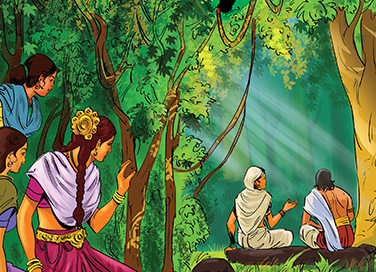Who was Bhasa?
- May 11, 2020


Who was Bhasa?
- May 11, 2020
Like many early Indian writers, little is known of Bhasa – most of the information about him comes from references in other works and commentaries. Bhasa is reputed to be one of the earliest Indian playwrights. It is known that he was already considered a classic when Kalidasa started his career, for Kalidasa’s very first play, the Malavikagnimitram has the lines:
Shall we neglect the works of such illustrious authors as Bhāsa, Saumilla, and Kaviputra?
Can the audience feel any respect for the work of a modern poet, a Kālidāsa?
To receive more such stories in your Inbox & WhatsApp, Please share your Email and Mobile number.
Based on this, Bhasa can be estimated to have lived between the 2nd century BCE and the 2nd century CE. Then, in 1912, the Sanskrit scholar, T. Ganapati Sastri, came across a palm-leaf codex in a village near Thiruvananthapuram in Kerala. It contained 13 plays, used in a theatre form called Koodiyattam. Among them was the Swapnavasavadatta, which was known to be by Bhasa. Sastri analysed the texts and realised that they were all by the same author, Bhasa.
Some of Bhasa’s most celebrated works are the Uru-bhanga and the Karna-bhara. Interestingly, both these plays focus on villainous and anti-hero characters like Duryodhana and Karna. The Uru-bhanga is staged moments before Duryodhana’s death on the battlefield, as he lies with his thighs crushed, repenting his actions. Such a moment of repentance never features in the original epic. Though Bhasa is fimrly on the side of the epic’s heroes, he is very sensitive in the portrayal of their opponents, painting them in shades of grey rather than outright black and white.
To receive more such stories in your Inbox & WhatsApp, Please share your Email and Mobile number.

Comic of The Month
The Naval Journey of India Book I
This book is the first of a three-book series that takes a deep and detailed look at India's Naval History and a deep insight into the lives of our men and women in white. But any series on the Indian Navy has to start at the very beginning - exploring India's celebrated maritime history. Join our little hero, Bharat, and his grandfather, Commodore Sagar, as they sail into the deep blue waters of time. Book I of The Naval Journey of India takes a sweeping look at India's maritime endeavours, how the seas impacted us over millennia and how the oceans made us who we are.